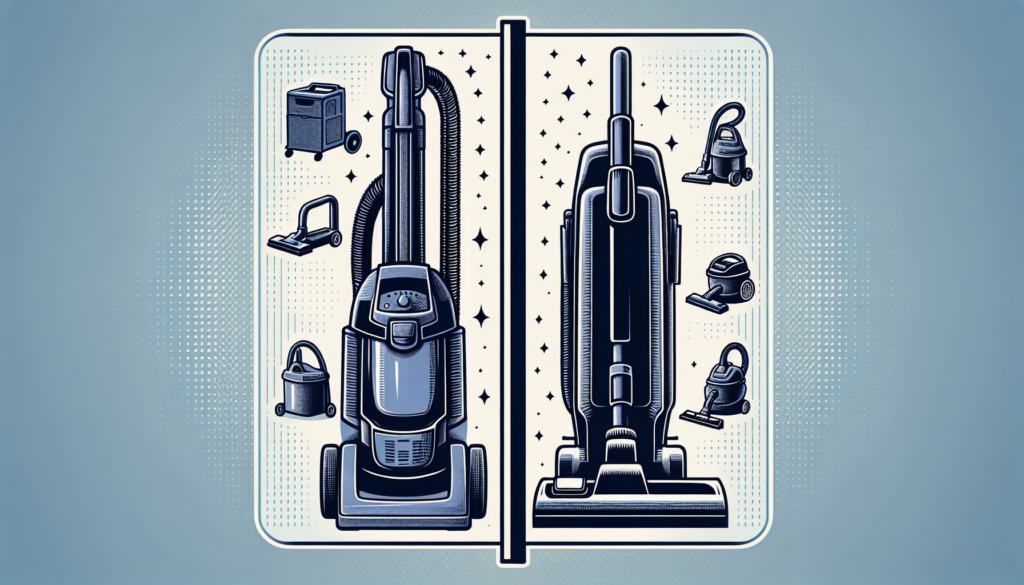Looking to create your own home gym? Look no further! BuySellCloud.com has got you covered with their comprehensive guide to purchasing home gym equipment. Whether you’re a fitness enthusiast or just starting your fitness journey, this guide will provide you with expert buying tips and insights to help you make confident decisions. With their trusted source and expert guidance, you’ll be able to find the perfect equipment to meet your fitness goals and transform your home into a personal fitness sanctuary. So, let’s dive in and discover the world of home gym equipment with BuySellCloud.com!

Consider Your Fitness Goals
Assess Your Fitness Needs
Before purchasing home gym equipment, it’s important to assess your fitness needs. Consider the specific areas you want to focus on and the types of exercises you enjoy. Take into account your current fitness level and any limitations or health concerns you may have. By understanding your fitness needs, you can select equipment that will help you achieve your goals effectively and safely.
Identify Your Workout Preferences
Everyone has different workout preferences, so it’s crucial to consider what type of exercise you enjoy the most. Some people prefer cardio workouts, while others enjoy strength training or flexibility exercises. By identifying your workout preferences, you can choose home gym equipment that aligns with your interests, making it more likely that you will stick to your fitness routine and achieve your goals.
Set Realistic Goals
Setting realistic fitness goals is essential to stay motivated and track your progress. Consider both short-term and long-term goals and make sure they are achievable within your current lifestyle and abilities. If you set goals that are too ambitious, you may become discouraged and lose motivation. By setting realistic goals, you can keep yourself motivated and focused on your fitness journey.
Evaluate Your Available Space
Measure Your Space
Before purchasing home gym equipment, it’s crucial to measure the available space in your home. Take accurate measurements of the room or area where you plan to set up the gym. Consider the dimensions and layout to ensure that the equipment you choose will fit comfortably and allow for proper movement during workouts. Taking the time to measure your space will help you select the right-sized equipment and avoid unnecessary space constraints.
Consider Ceiling Height
In addition to measuring the floor space, consider the ceiling height in your designated gym area. Some exercise equipment, such as treadmills or elliptical machines, require extra headroom for comfortable use. Ensure that your ceiling height is sufficient to accommodate the equipment you are interested in. This will help prevent any restrictions or safety hazards during your workouts.
Assess Flooring Requirements
Different types of gym equipment have different flooring requirements. For example, heavy weights may require a stronger and more impact-absorbing flooring than cardio machines. Assess the flooring in your designated gym area to determine if any modifications or additions are necessary. You may need to install rubber mats or specialized flooring materials to ensure a safe and comfortable exercise environment.

Determine Your Budget
Set a Realistic Budget
Before diving into the world of home gym equipment, it’s crucial to set a realistic budget. Decide how much you are willing to spend and consider the value you expect to receive from your investment. Home gym equipment can range from affordable options to high-end models, so determining your budget beforehand will help narrow down your choices and prevent overspending.
Consider Long-Term Costs
When budgeting for home gym equipment, it’s essential to consider long-term costs. Think about any ongoing expenses, such as maintenance, repairs, or replacement parts. Research the expected lifespan of the equipment you are interested in and factor in any additional costs that may arise over time. By considering long-term costs, you can make a more informed decision about the overall value and affordability of the equipment.
Prioritize Essential Equipment
If you are working with a limited budget, prioritize essential equipment that aligns with your fitness goals. Focus on the equipment that will provide the most versatile and effective workouts. For example, if strength training is your main focus, investing in high-quality dumbbells and a bench may be more important than purchasing a large cardio machine. By prioritizing essential equipment, you can make the most of your budget and still create an effective home gym setup.
Choose the Right Equipment Types
Cardio Machines
Cardio exercises are essential for improving cardiovascular health and burning calories. This category includes treadmills, ellipticals, stationary bikes, rowing machines, and more. Consider the space you have available and your personal preferences when selecting a cardio machine. Some options offer low-impact workouts, making them a good choice for individuals with joint issues or injuries.
Strength Training Equipment
Strength training is crucial for building muscle and increasing overall strength. This category includes free weights, weight machines, resistance bands, and other equipment designed for specific muscle groups. Consider the variety of exercises you can perform with the equipment and how it aligns with your fitness goals. Adjustable dumbbells or a versatile weight machine can provide a wide range of exercises in a compact space.
Flexibility and Mobility Tools
Flexibility and mobility are often overlooked but are important aspects of fitness. This category includes equipment such as foam rollers, yoga mats, resistance bands, and stretching tools. These tools can help improve flexibility, prevent injuries, and enhance recovery. Choose equipment that suits your flexibility needs and allows you to perform various stretching and mobility exercises.
Accessories and Extras
Alongside larger equipment options, there are numerous accessories and extras that can enhance your home gym experience. These include items like fitness balls, medicine balls, exercise mats, jump ropes, and more. Assess your specific exercise preferences and consider adding accessories that will complement your workouts. These accessories can add variety to your routine and help target different muscle groups.

Research Different Brands and Models
Read Expert Reviews
When exploring different brands and models of home gym equipment, be sure to read expert reviews. Experts can provide valuable insights into the quality, performance, and durability of various equipment options. Look for reviews from reputable fitness professionals or fitness equipment experts to get a well-rounded perspective on the pros and cons of different brands and models.
Compare Specifications
Comparing specifications is crucial to determine which equipment meets your requirements. Look for information on weight capacity, size dimensions, features, and functions. Compare these specifications across different brands and models to find the equipment that best suits your needs. Pay attention to details that are important to you, such as incline capabilities, resistance levels, or workout program options.
Consider Durability and Warranty
Durability is a key factor when purchasing home gym equipment. Look for equipment made from high-quality materials that can withstand regular use and potential wear and tear. Pay attention to customer reviews regarding the durability and longevity of specific brands and models. Additionally, consider the warranty offered by the manufacturer. A longer warranty period can provide peace of mind and protection against any potential defects or malfunctions.
Consider Space-Saving Options
Collapsible or Foldable Equipment
If you have limited space in your home, consider collapsible or foldable equipment options. These types of equipment can be easily folded and stored away when not in use, saving valuable space. Look for equipment that is designed with a compact footprint and offers the convenience of easy storage. Collapsible treadmills, foldable weight benches, and portable exercise bikes are just a few examples of space-saving options.
Multifunctional Equipment
To optimize your available space, consider investing in multifunctional equipment. These pieces of equipment provide multiple exercise options in one machine, allowing you to target different muscle groups without the need for multiple pieces of equipment. For example, a power tower can combine a pull-up bar, dip station, and other exercise stations into one compact unit. Opting for multifunctional equipment helps maximize your workout options while minimizing the physical space required.
Modular Systems
Modular systems are another excellent option for those looking to optimize space in their home gym. These systems typically consist of individual components that can be arranged and rearranged to create a customized setup. The ability to mix and match different pieces allows for flexibility and enables you to adapt the equipment to your specific needs and available space. Modular systems often include options for strength training, cardiovascular exercise, and flexibility workouts.
Safety and Quality
Look for Safety Features
When purchasing home gym equipment, prioritize safety features. Look for equipment that includes safety features such as safety locks, handrails, and non-slip surfaces. For strength training equipment, consider options with adjustable safety catches or spotter arms to prevent accidents during heavy lifts. Prioritizing safety ensures that you can exercise without unnecessary risks or injuries.
Check for Stability and Weight Capacity
Stability is essential to prevent equipment from tipping or shifting during workouts. Ensure that the equipment you choose has a sturdy and stable base, especially for cardio machines and weight benches. Consider the weight capacity of the equipment to ensure it can accommodate your body weight and any additional weights you may use. Checking for stability and weight capacity will help you select equipment that provides a safe and secure workout environment.
Evaluate Build Quality and Materials
The build quality and materials used in home gym equipment determine its durability and longevity. Look for equipment made from high-quality materials that can withstand frequent use and heavy loads. Stainless steel or high-grade aluminum frames, durable upholstery, and strong cables are indicators of good build quality. Avoid equipment that feels flimsy or poorly constructed, as this may compromise both safety and functionality.
Seek Professional Advice
Consult with a Personal Trainer
If you’re unsure about which home gym equipment is best for you, consider consulting with a personal trainer. A qualified professional can assess your fitness goals, current fitness level, and any limitations you may have. They can provide personalized recommendations and guide you towards equipment that will be most effective for your needs. Their expertise can help you make informed decisions and ensure that your home gym setup aligns with your goals.
Visit Fitness Equipment Stores
Visiting fitness equipment stores allows you to try out different equipment options and get a feel for their quality and functionality. Take the time to test out various machines and ask questions about their features and benefits. Store staff can often provide additional information and help you find equipment that matches your requirements and preferences. Exploring physical stores provides a hands-on experience that can aid your decision-making process.
Join Online Fitness Communities
Online fitness communities are valuable resources for gathering information and insights from fellow fitness enthusiasts. Join forums, social media groups, or fitness-related websites to connect with others who have experience purchasing home gym equipment. Ask for recommendations, read reviews from real users, and engage in discussions about different brands and models. Learning from the experiences of others can help you make a more informed decision and avoid potential pitfalls.
Consider Maintenance and Support
Check Maintenance Requirements
Before finalizing your purchase, consider the maintenance requirements of the equipment you are interested in. Some machines may require regular cleaning, lubrication, or calibration to ensure optimal performance. Assess your ability and willingness to perform necessary maintenance tasks and choose equipment that aligns with your capabilities. Understanding the maintenance requirements upfront will help you prevent any potential issues down the line.
Ensure Availability of Spare Parts
Over time, parts of your home gym equipment may wear out or require replacement. Before making a purchase, ensure that spare parts for the specific brand and model are readily available. Check if the manufacturer offers a warranty that covers replacement parts or if they have a reliable supply chain for easy access to replacements. Having access to spare parts ensures that you can maintain and prolong the lifespan of your equipment.
Look for Customer Support Options
Customer support is an important aspect to consider when purchasing home gym equipment. Make sure the manufacturer provides adequate customer support channels, such as phone or email assistance, to address any inquiries or concerns you may have. Research customer reviews and experiences to gauge the level of support provided by the brand. Having reliable customer support can provide peace of mind and assistance if any issues arise with your equipment.
Conclusion
Creating a home gym can be an exciting and rewarding venture, allowing you to prioritize your fitness goals and exercise at your convenience. By considering your fitness goals, evaluating your available space, determining your budget, choosing the right equipment types, researching different brands and models, considering space-saving options, prioritizing safety and quality, seeking professional advice, and considering maintenance and support, you can make an informed decision when purchasing home gym equipment. Remember to prioritize your needs, preferences, and budget to create a space that aligns with your fitness journey. With the right equipment, you can embark on a fulfilling fitness routine from the comfort of your own home.



